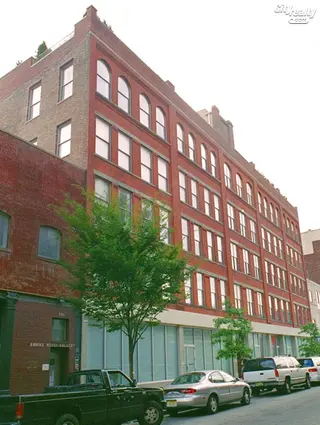 Carter Horsley
Carter HorsleyDec 23, 2011
Carter's Review
The rapid transformation of the Chelsea neighborhood in the West Midtown South section of Manhattan at the end of the 20th Century has been astounding as art galleries moved into it from SoHo and renovation and new construction of residential properties seemed to crop up everywhere.
Part of the impetus came from the Chelsea Piers recreational complex, which opened in 1996, and the creation of a Hudson River Park esplanade, both of which made the waterfront more attractive.
Furthermore, the elevated rail tracks that run from the Far West Village up to the mid-30 s is being studied not for demoliton but for redevelopment as a recreational community asset, one that is likely to become a tourist attraction as well.
Art galleries driven out of SoHo by the high rents that were being paid by fashion companies were attracted to Chelsea by the availability of former industrial spaces as well as its charming and quaint surprises.
Chelsea was not without culture. The famous Chelsea Hotel at 222 West 23rd Street was "home" to many celebrated writers and painters and photographers have long haunted the sidestreets to get their pictures developed and enlarged and to buy equipment. Moreover, the Joyce Theater, which was formerly the Elgin movie theater, has been one of the city's major modern dance venues for many years and the Dance Theater Workshop opened a new mixed-use facility in 2003 about the same time as this building, the former Eagle Warehouse, was being converted to residential condominiums.
Chelsea also boasted two of the city's largest mid-rise buildings, the former Port Authority full block complex between Eighth Avenue and Ninth Avenues and 15th and 16th Streets and the famous Starrett-Lehigh Building Street between 11th & 12th Avenues and 26th & 27th Streets. Other notable Chelsea developments are the porthole-windowed Maritime Building on Ninth Avenue at 16th Street, now a hotel, and the General Theological Seminary on the full block bounded by 9th & 10th Avenues and 20th and 21st Streets.
This attractive, red-brick, 6-story building has 17 condominium units and was developed by Christian Pompa and Barry Leistner and houses the Sonnabend Gallery. It is across the street from the Spears Condominium at 525 West 22nd Street that was developed about three years earlier by Savanna Partners. It is on the same block as the Dia Center for the Arts. Initial prices at the Eagle started at about $500 a square foot.
Around the corner on 23rd Street two new apartment buildings were completed at about the same time as this project, The Tate and the Marais.
While the subways are a bit far away, there is excellent bus service.

- Condo built in 1930
- Converted in 2000
- Located in Chelsea
- 17 total apartments 17 total apartments
- 10 recent sales ($1.8M to $8M)

 6sqft delivers the latest on real estate, architecture, and design, straight from New York City.
6sqft delivers the latest on real estate, architecture, and design, straight from New York City.
